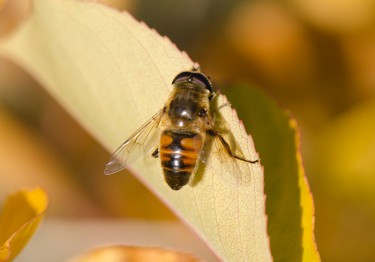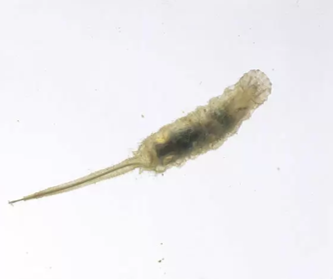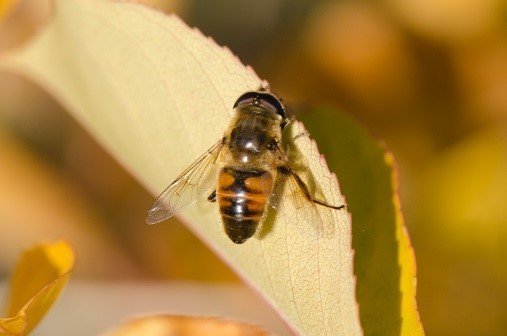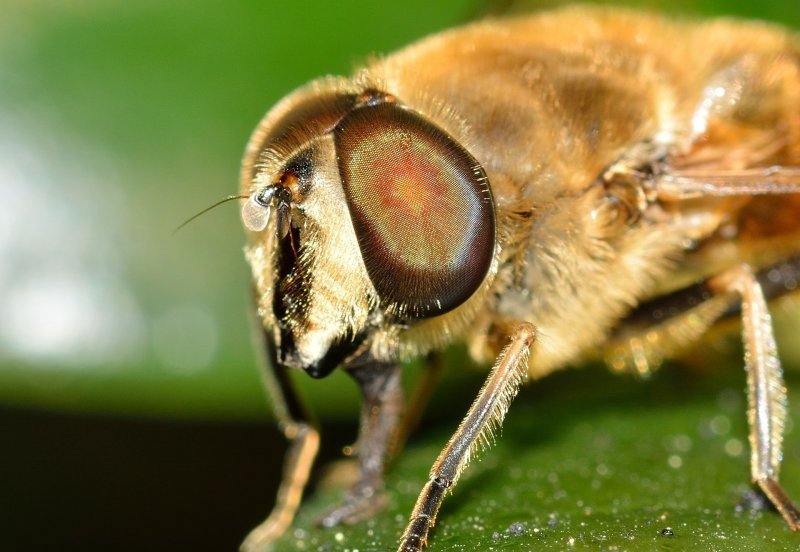Predatory mites and nematodes can be used to tackle rat tail larvae.
Biomite (Predatory mites against fly eggs)
Biofly (Raptor flies against fly larvae)
Biowasp(Parasitic wasps against fly pupae)
Fly Bucket Trap (Innovative bucket trap)

Despite its name and bee like appearance a common drone fly is a harmless hoverfly.

To reproduce, females seek moist environments with organic matter. For these reasons, manure pits are very attractive to the rat tail larvae. The eggs are laid in the pits and the larvae develop there.
Once fully grown, just before pupation, the larvae move to drier places to pupate. It is often in this phase that the larvae are encountered. Hundreds of larvae can crawl on the ground. The adult flies that emerge from the pupae leave the shed in search of flowers outside.

Egg: egg-shaped and white.
Larva: The larvae molt several times before reaching adulthood. They are characterized by the presence of their tail, which is basically a snorkel. To get enough oxygen, the larvae have an expandable breathing tube that can be 15 cm long.
Adult: 14–16 mm in size and have two conspicuous vertical hairy bands above their eyes.

The larvae feed on decomposing organic matter, which is why they live in manure, where they filter their food.Adults are pollinators and feed on the nectar of flowers.
Nuisance/
environmental damage
Flies and larvae are safe for animals and humans, but the sight of large numbers of crawling larvae can be unpleasant. They can be abundant in pits, milking rooms or in office or retail areas. If large numbers of larvae are crawling on the floor, lime barriers can be made to stop them.

Biomite (Predatory mites against fly eggs)
Biofly (Raptor flies against fly larvae)
Biowasp(Parasitic wasps against fly pupae)
Fly Bucket Trap (Innovative bucket trap)
Get in touch with us
Call us on 01284 636362 or email us direct